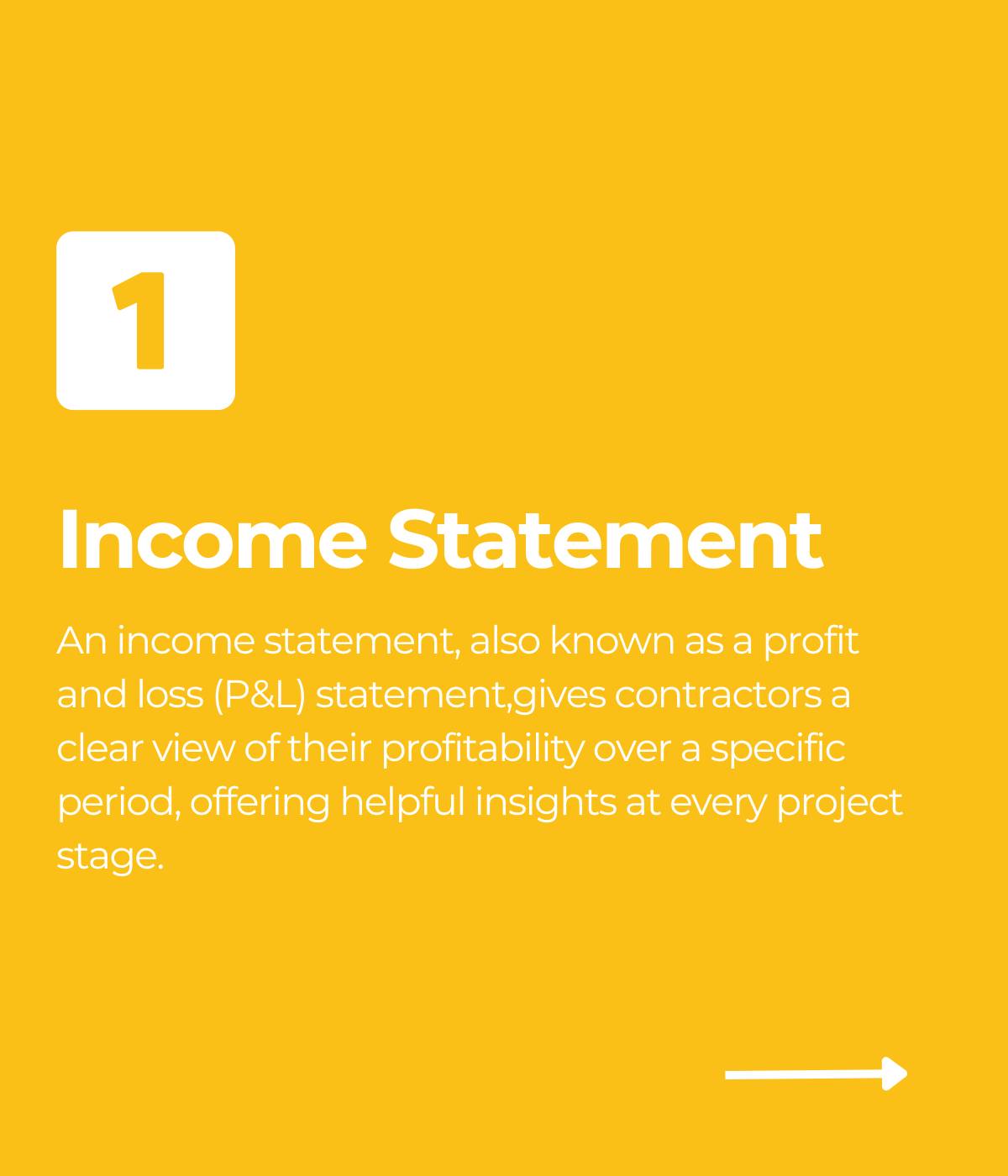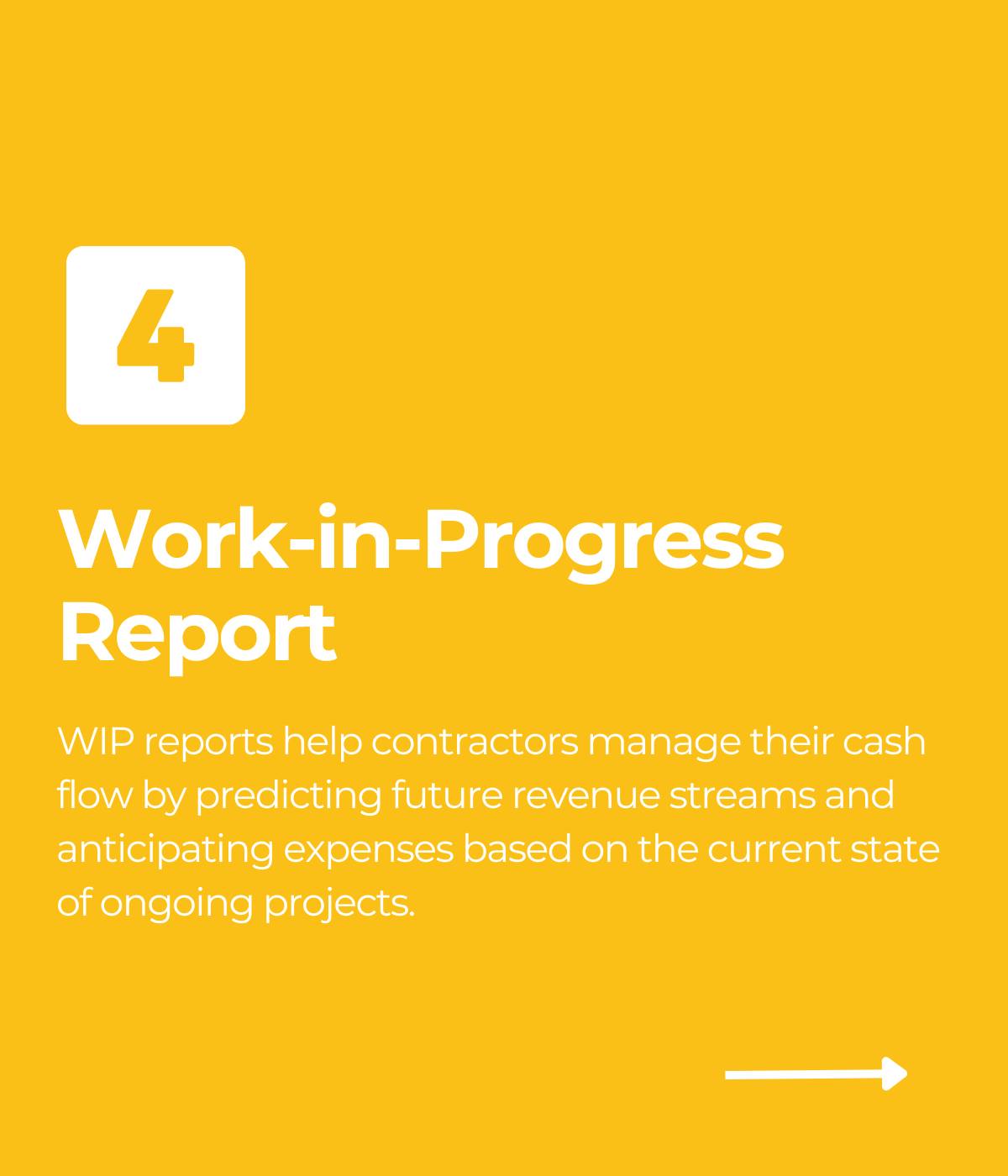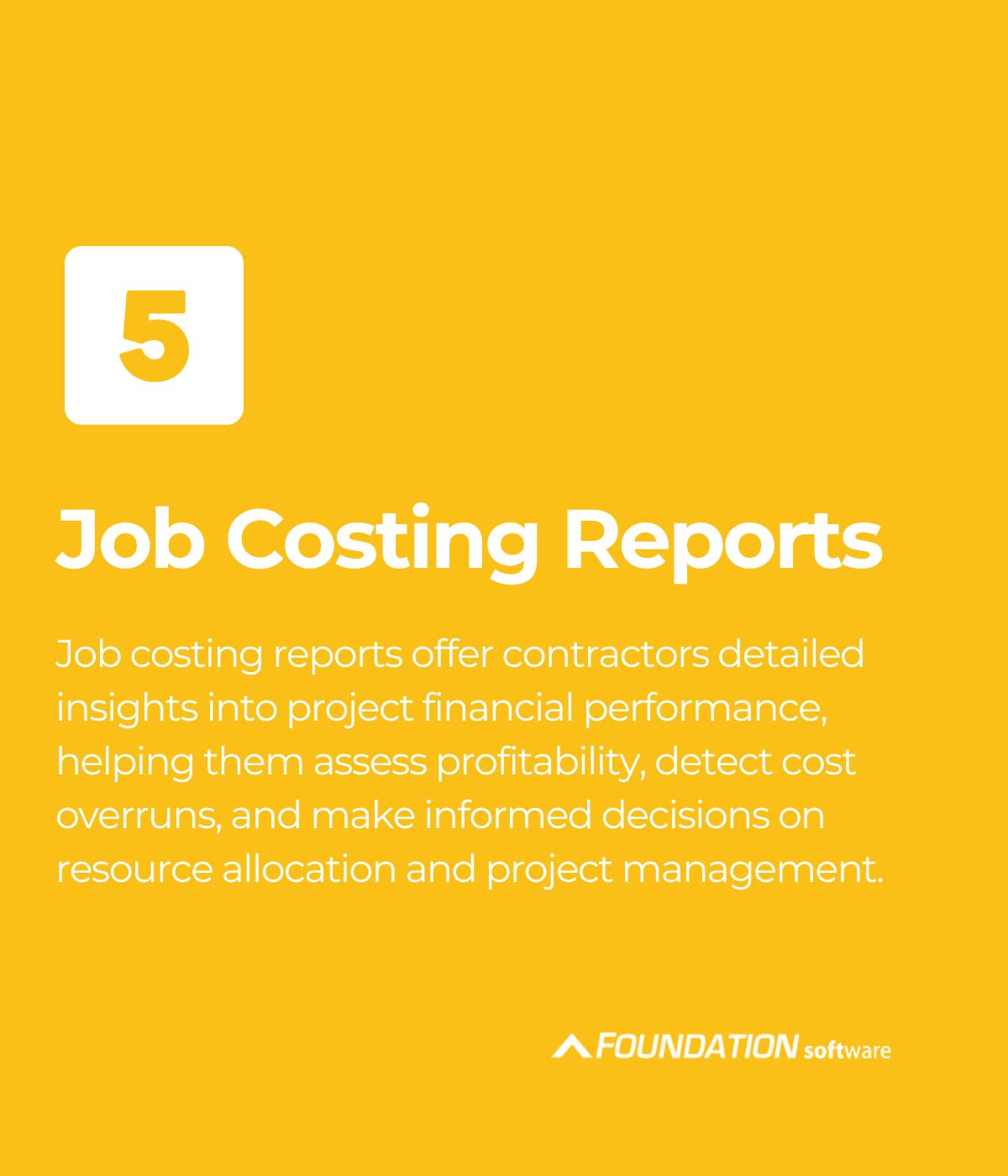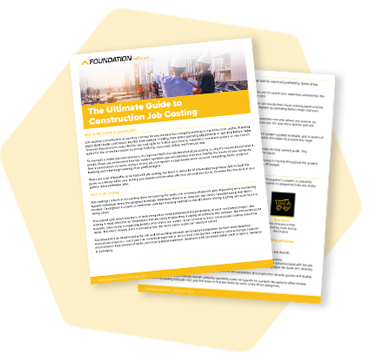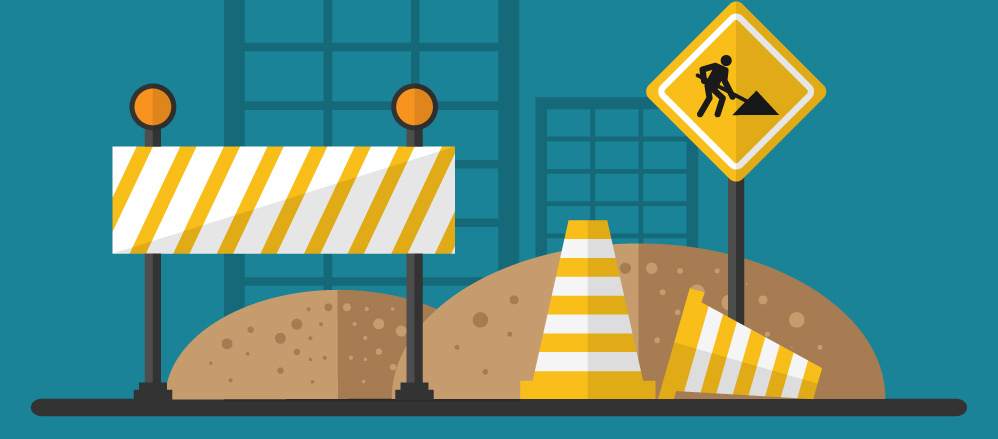
If you’ve ever worked on federal construction projects, you’ve probably heard the name “Davis-Bacon.” Or else, those two words might be why you’ve never bid on a publicly funded job.
Technically, Davis-Bacon is the name of just one piece of prevailing-wage legislation. However, people often use it to refer to all sorts of prevailing wage requirements. And it does give contractors a lot to consider. But diving into the facts about one of construction’s most debated sets of wage laws can help take the doubt out of “Davis” and bring home the bacon for your business.
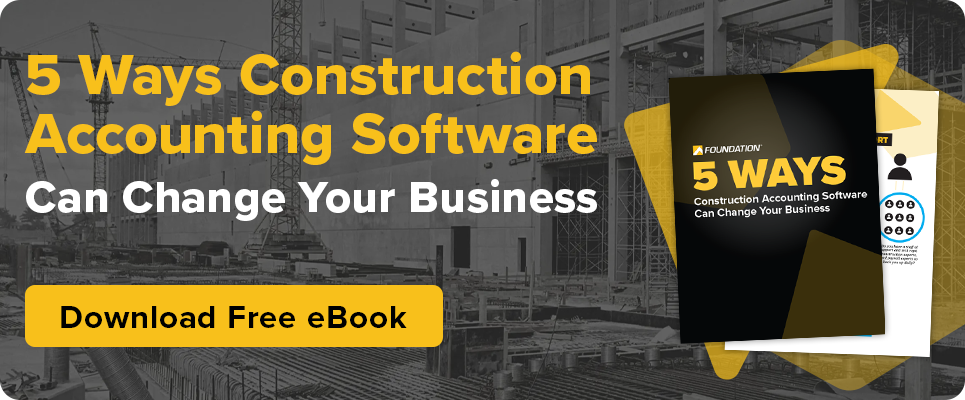
Understanding these complex labor laws is crucial for success in federal construction projects.
Key Insights: Navigating Davis-Bacon Act Requirements in Federal Construction Projects
- Davis-Bacon prevailing wage requirements apply to federal construction projects over $2,000, ensuring workers receive fair compensation based on local wage standards. These Federal requirements impact how contractors bid on and manage public works projects.
- The U.S. Department of Labor establishes accurate wage determinations for each project, considering factors like location and worker classifications. Contractors must adhere to the applicable wage determinations to comply with labor law requirements.
- Davis-Bacon Wage Rate requirements encompass both cash wages and fringe benefits, allowing flexibility in how contractors meet these obligations. Understanding the project wage determination is crucial for proper budgeting and compliance.
- Proper classification of workers is essential for adhering to Davis-Bacon prevailing wage requirements. Federal agencies enforce these labor laws to ensure fair treatment of construction workers on government-funded projects.
- Contractors can influence future wage determinations by participating in Department of Labor surveys. Accurate reporting helps establish fair rates that reflect the true cost of labor, similar to how collective bargaining agreements influence wage standards in the private sector.
1. Davis-Bacon wages are set federally, applied locally.
Prevailing wage requirements consist of numerous federal, state, and local laws, but most federal projects are governed by the Davis-Bacon Act.
What Is the Davis-Bacon Act?
The Davis-Bacon Act of 1931 requires contractors and subcontractors working on federally funded jobs to pay their construction laborers wages and benefits no less than what others locally pay their construction workers for similar projects. This is called the “prevailing” wage. Under Davis-Bacon, contractors can pay this wage out as a combination of cash and fringe benefits.
Davis-Bacon generally applies to contracts in excess of $2,000 to which the U.S. government or District of Columbia is a party. It includes construction, alteration, or repair of public buildings and public works. It also requires the contractor or subcontractor to display the relevant wage scale prominently at the work site.
What Are Davis-Bacon Related Acts?
Although people will sometimes say “Davis-Bacon” interchangeably with “prevailing wage,” numerous other federal, state, and local laws govern wage requirements.
| Davis-Bacon and Related Acts (DBRA) | DBRA includes roughly 60 statutes that contain prevailing wage provisions. They assist Davis-Bacon projects through grants, loans, and insurance. |
|---|---|
| McManara-O’Hara Service Contract Act (SCA) | SCA applies to federal contracts in excess of $2,500 for service work. Davis-Bacon Act wages can also apply to Service Contract Act contracts if the contract requires substantial separate construction activity (29 C.F.R 4.116). |
| Contract Work Hours and Safety Standards Act (CWHSSA) | CWHSSA requires that contractors pay a standard overtime rate on Davis-Bacon and SCA contracts. Laborers and mechanics must receive one and a half times the basic rate for hours worked in excess of 40 per week. This requirement is “self-executing,” meaning it can apply even without the contract stating it. |
| Copeland “Anti-Kickback” Act | The Copeland Act applies to more than just wage kickbacks. It also regulates deductions from Davis-Bacon prevailing wages and requires contractors to submit a weekly “statement of compliance.” Contractors know these reports more commonly as “certified payroll.” |
What Are Davis-Bacon Wages?
Minimum Davis-Bacon Wages are “based on the wages the Secretary of Labor determines to be prevailing for the corresponding classes of laborers and mechanics employed on projects of a character similar to the contract work” in that local area (40 U.S.C. 3142). In other words, the U.S. Department of Labor sets Davis-Bacon wage rates and maintains them over time.
These wage rate determinations are published online at wdol.gov, along with Service Contractor Act wage determinations. Each wage determination lists a cash portion and fringe portion to be paid for each worker classification. However, contractors may also use cash to pay out fringe requirements.
State or local jurisdictions may also have wage requirements; however, contractors need to research these as well.
2. Numerous criteria determine who earns Davis-Bacon wages.
The Davis-Bacon Act states that prevailing wages must be paid to “all mechanics and laborers employed on the site of the work,” but it’s important to determine who these employees are and what the site of the work is.
According to the Code of Federal Regulations, a laborer or mechanic “includes at least those workers whose duties are manual or physical in nature . . . as distinguished from mental or managerial” (29 C.F.R. 5.2). This definition isn’t limited to specific trades but may include apprentices, trainees and helpers under certain conditions. It may also include foremen who spend more than 20% of their workweek doing manual or physical work.
The site of work also carries a specific definition. Primarily, it’s “the physical place or places where the building or work called for in the contract will remain.” However, it may also include other sites established to perform work for that contract specifically and nearly exclusively. Sites like tool yards or prefabrication plants may not qualify if the contractor uses them for other jobs and if they aren’t adjacent to the primary site of work.
For example, then, a laborer may prefabricate materials for a Davis-Bacon job at an off-site plant used for multiple projects. In this case, his labor wouldn’t appear to qualify under the Davis-Bacon and Related Acts Regulations. Even though his labor helps complete the project, he’s not “employed on the site of the work.”
3. Davis-Bacon wage determinations depend on you.
Whether you’ve ever worked a Davis-Bacon wage job, you may have at some point received a Form WD-10. The Department of Labor’s regional offices use this form to conduct wage-determination surveys for each state every three years. Construction contractors who complete this “Davis-Bacon Wage Survey” provide DOL’s primary source of information for making applicable Davis-Bacon wage determinations.
Form WD-10 surveys three construction types separately: building, heavy/highway, and residential. When surveyed contractors return enough information for the “key class” of workers within each of these, the Department of Labor can determine the average pay and fringe benefit rates. If too few contractors respond, DOL may resort to using certified payrolls from area projects to determine a Davis-Bacon prevailing wage rate. With severely limited information, wage determinations for some types of construction or key classes may be incomplete.
Therefore, it’s in contractors’ best interests to return data whenever possible, helping wage rates to be fair and accurate. These determinations are crucial for construction companies to accurately bid on and budget for federal projects. Completing WD-10s does require careful analysis of your past payroll records, but good construction payroll software makes this much easier. The key feature to look for is the ability to produce certified payroll reports retrospectively. Your software can then produce a certified payroll report for each of your non-Davis-Bacon jobs, giving you all the information you would need to complete a Form WD-10.
Construction payroll software helps ensure compliance with prevailing wage laws and simplifies reporting requirements.
4. You can educate yourself on Davis-Bacon wages.
Nothing can teach you the ins and outs of Davis-Bacon like real-world experience, but the resources exist to educate yourself. Most contractors say the most frustrating part of working with Davis-Bacon wages is trying to find answers. Questions will come up, and the best source will always be the direct source. When in doubt, refer back to the most current text of the law itself and the Department of Labor’s resources.
- The U.S. DOL and Hour Division (WHD)
- The Davis-Bacon Act, as Amended
- Code of Federal Regulations, Subtitle A
- Recent judicial decisions about Davis-Bacon wages
- Form WD-10 and instructions
- Davis-Bacon wage determinations
Staying up-to-date with changes in construction labor law is essential for maintaining compliance.
5. Construction payroll software is key for keeping Davis-Bacon requirements.
Understanding Davis-Bacon and Laborstandards is half the battle, but the other half is compliance. Knowing the rules is not enough. Construction contractors have to find a way to manage the processes that let them comply with Davis-Bacon wage requirements. Your staff still needs to capture accurate timecards, use complex calculations, and complete certified payroll reports.
Construction accounting software helps by effectively managing more data, automating more processes, and reducing human error that can otherwise lead to underpayment, overpayment or misreporting. Here’s how:
Multiple rate tables for areas and trades
Not every job you work will require Davis-Bacon wages, but they may require some jurisdictions’ prevailing wages. This means maintaining different rate tables for different geographical areas and projects.
Wages will also depend not on an employee’s normal work classification but the classification they fall under for those hours worked on the jobsite. So Joe may need one rate as a brush-and-roller painter in the morning and a different rate when spraying in the afternoon.
To avoid error, your software should allow you to define those various rate tables along with settings to determine which table it should use to calculate wages and fringes based on information from your timecards.
Options for fringe accruals
Davis-Bacon wage regulations allow contractors to pay fringes as cash rather than as bona fide benefits. Many find this easier, but it does amount to greater payroll taxes than if they paid out pre-tax fringe benefits. Therefore, they may prefer to contribute bona fide fringes to a third-party plan. In this event, your construction software’s ability to track accruals with the appropriate rates and limits with each paycheck is crucial.
Automatic fringe reductions
The ability to reduce fringe rates by the cost of bona fide fringes you already offer is a key feature of the law. And contractors should use it. Unfortunately, many don’t only because they find it too difficult to calculate this information each week for each employee. If your construction accounting software can calculate fringe reductions automatically, however, you can save money while remaining compliant.
Extensive Davis-Bacon Reporting
Of course, you want your system to be able to complete weekly certified payrolls automatically rather than manually. It should also be able to report historical certified payrolls and update certified payrolls retroactively. This includes federal Form WH-347 for Davis-Bacon wages and state prevailing wage forms for print or electronic submission. You can then use these reports to complete Form WD-10 and for Davis-Bacon wage determinations.
USDOL-CPR
As long as your construction payroll software truly integrates with your job cost accounting software, it’ll update work-in-progress (WIP) and job cost reporting with labor and burden costs automatically as soon as you post payroll. Granular job cost reports that include the precise cost of fringes can then help produce more accurate estimates on your federal government contracts, helping you control the profit margin in your bottom line and letting you thrive under more Davis-Bacon opportunities in the future.
Navigate Davis-Bacon Wages With Confidence
When working under the Davis-Bacon Act, there’s no substitute for thorough research, but it shouldn’t discourage construction contractors from bidding. Resources are readily available to help companies understand Davis-Bacon labor standards, prevailing wage, and other requirements. These can help ensure their compliance to the various statutes and wage determinations that govern their jobs. By leveraging the right tools and knowledge, construction firms can confidently tackle Davis-Bacon projects and expand their federal construction portfolio.
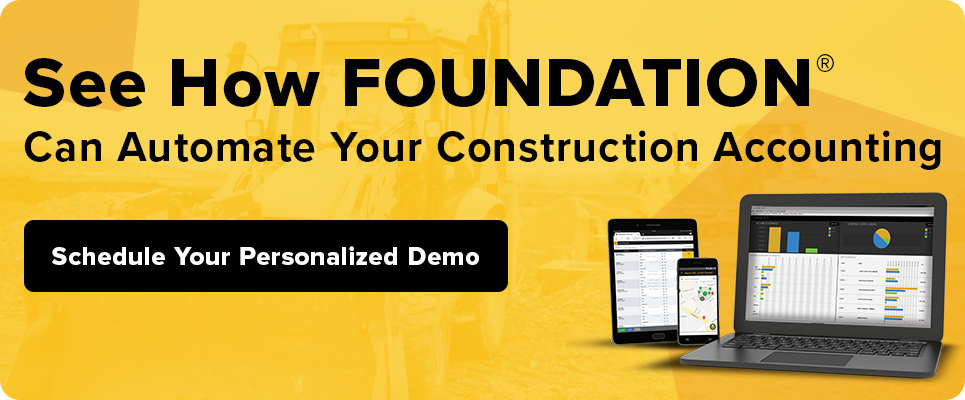
With a base understanding, you as a contractor can then begin to gain or build upon practical experience navigating these complex waters, taking on these attractive construction contracts, and making the most success out of your opportunities.
Share Article
Keep on current news in the construction industry. Subscribe to free eNews!
Our Top 3 YouTube Videos
Learn about our software more in depth with product overviews, demos, and much more!
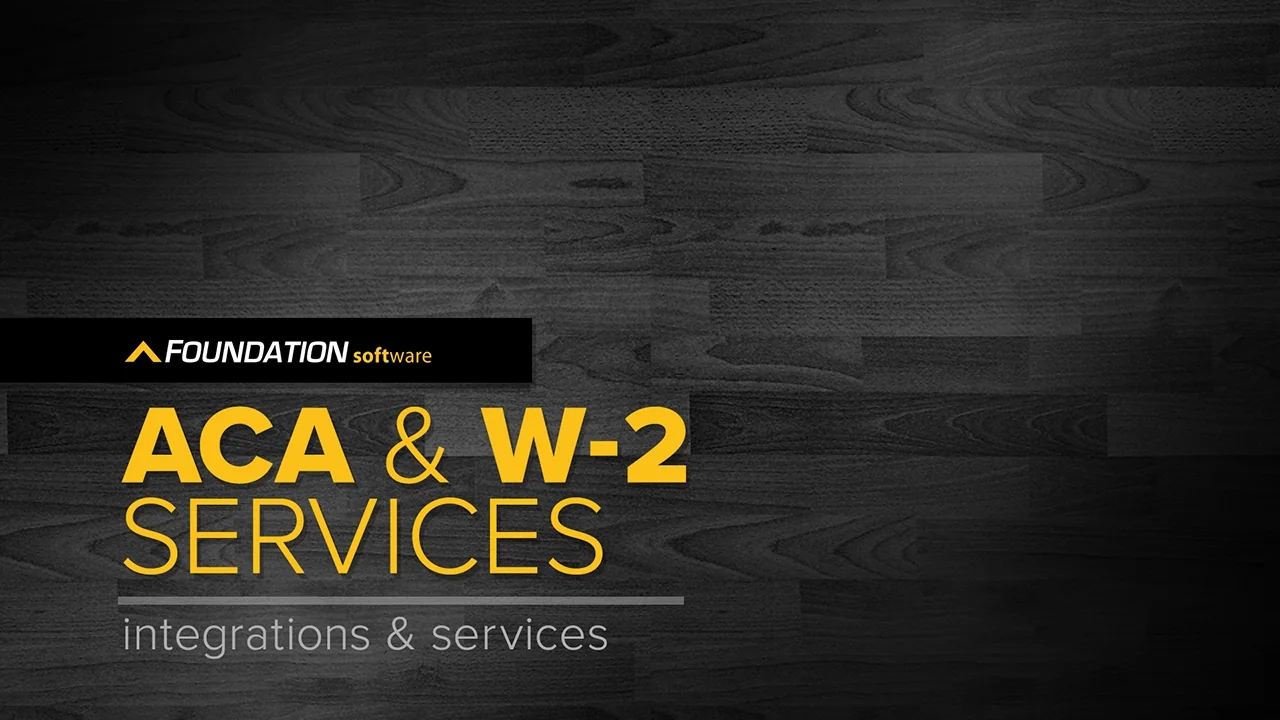
Our ACA reporting & e-filing services include official 1094-C and 1095-C IRS reporting, optional e-filing (no applying for a TCC code required), mailing to your employees and experienced support to help you.

There are plenty of reasons to make FOUNDATION your choice for job cost accounting and construction management software — just ask our clients!
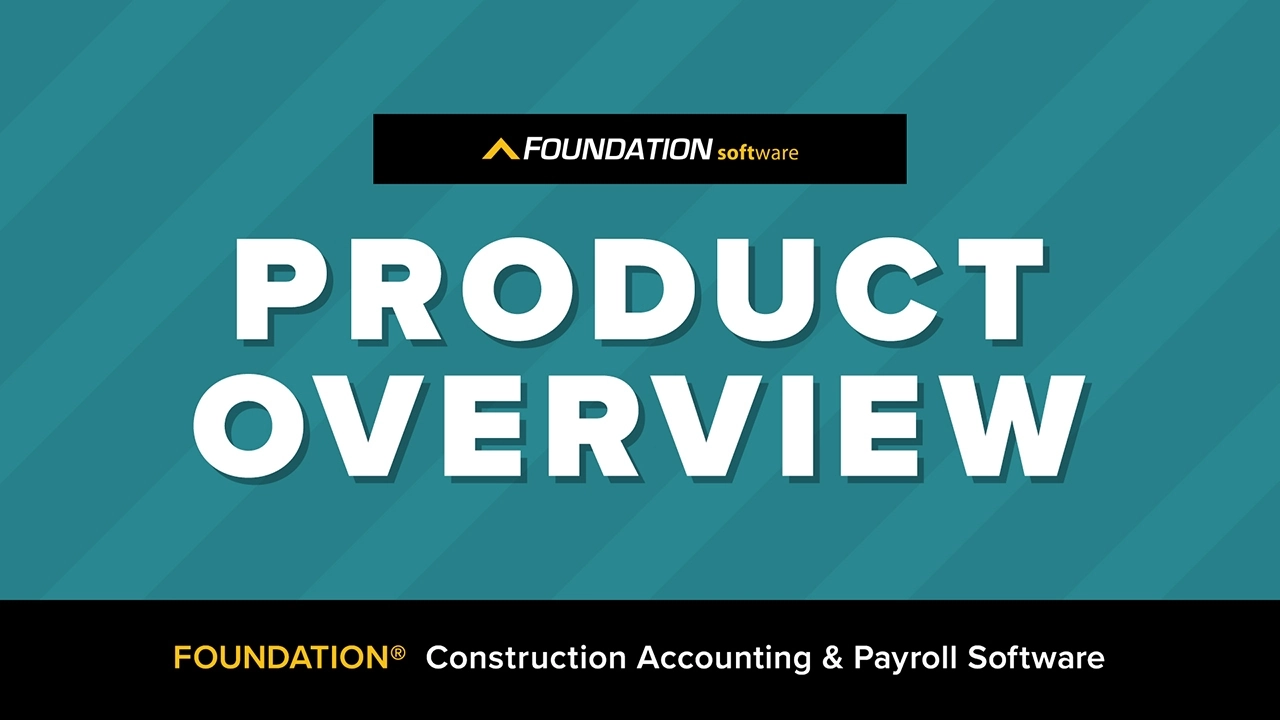
From job cost accounting software, to construction-specific payroll. Get an overview on your next all-in-one back-office solution.




